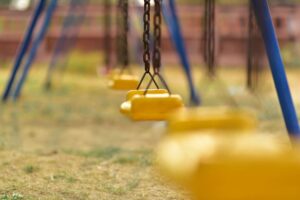Dangerous Condition Injury Claims
If you have been injured as a result of a dangerous condition on someone else’s property (often referred to as a “slip and fall”), the path to recovering compensation for your injuries can seem intimidating.
Additionally, most of the evidence of the business or property owner’s negligence will only be available in discovery after a lawsuit is filed. Without an attorney, most defendants know that you will not be able to get your hands on surveillance footage, internal incident reports, work logs, or evidence of prior similar incidents. This impacts the settlement offers you will receive.

REQUIREMENTS TO SUCCEED ON DANGEROUS CONDITION CLAIM
In order to succeed on a dangerous condition claim, you must show that the landlord, property manager, or other party in control of the property either created or allowed a dangerous condition to exist as result of negligent maintenance or operation of the premises.
A key issue in all of these claims is whether the responsible party had actual notice or constructive notice of the dangerous condition.
COMMON PLACES WHERE DANGEROUS CONDITIONS OCCUR
Whether the incident occurred at a retail store, on public property, at school, or any other location, we will work tirelessly to ensure that you receive the compensation you deserve.
RETAIL STORE
One of the most common places people are injured by dangerous conditions are in retail stores such as grocery stores, convenience stores, and big-box retailers. While it is easy to establish who is in control of these areas, it can be difficult to prove the store owner had notice of the dangerous condition and acted negligently by failing to remove it.
One exception to this rule is if the store’s employee created the dangerous condition in the first place. In these situations, CA law assumes that the store owner had notice of the condition.
Evidence that is Helpful in These Cases:
- Photos of the dangerous condition
- Photos of the exact area where the dangerous condition existed
- The store incident report
- Your receipt for any purchases made at the store that day
- The names of any employees you interacted with
- Pictures of the shoes you were wearing at the time
PUBLIC PROPERTY
When a person is injured by a dangerous condition on public property, the responsible party is usually the government entity that owns or maintains the property. In California, an injured person has only six (6) months to make a claim to the government entity responsible for the dangerous condition, after which their claim will be barred.
Additionally, if your claim is denied by the government, you have only another six (6) months to file a lawsuit against the government entity. Otherwise, your claim will expire.
Common Public Property Types:
- Sidewalks
- Roads
- Alleys
- Public Schools
- Government Buildings
- County Fairs
EVENT SPACE
Picture this: you bought your ticket for a fun night out with your friends, went out to see a [insert event] and ended up getting injured by a dangerous condition you couldn’t see in the dark. You reached out to the event owner, and they have told you that you don’t have a claim because you were drinking that night. Sound familiar?
If it does, don’t listen to the event owner. Call an attorney today.
Common Event Spaces:
- Sports Arenas
- Music Venues
- Festivals and Fair Grounds
- Night Clubs
- Movie Theaters
- Concert Halls
LANDLORD-TENANT
When you are injured by a dangerous condition in your unit or apartment building, your landlord and/or property manager are usually the ones to blame. While most landlords carry significant insurance policies, they also hire teams of attorneys to discourage claims and intimidate tenants into staying quiet.
Your landlord is NOT allowed to retaliate against you in the form of eviction, rent increases, or any other form of harassment in response to your personal injury claim. If they do, speak to an attorney immediately.
Common Dangerous Conditions in Apartments:
- Defective stairs or stairways
- Glass doors without door stoppers
- Conditions in common areas
- Bed bug infestations
- Flooding and/or unclean tap water
- Structural collapse




